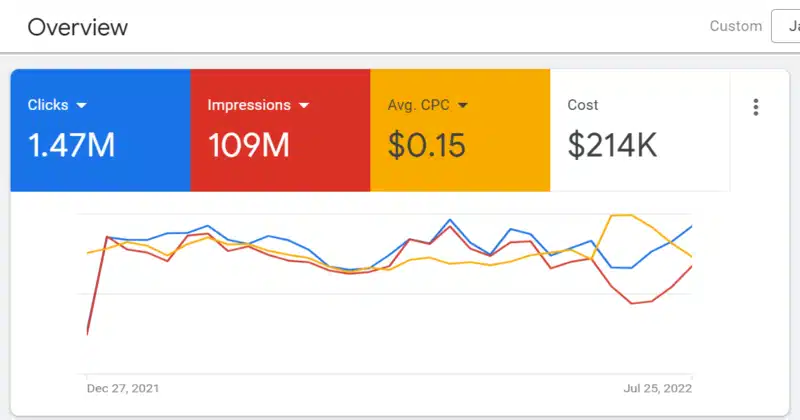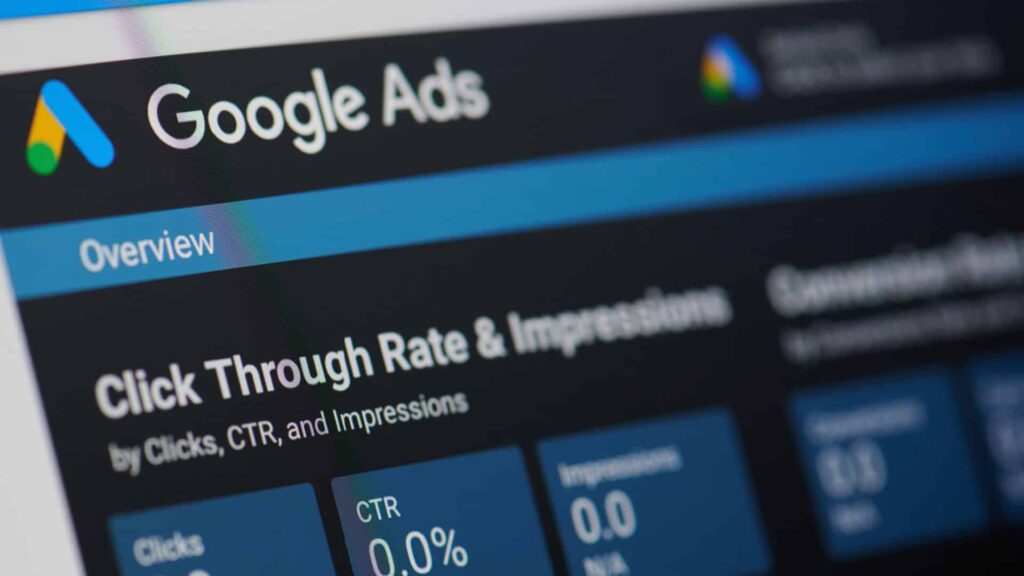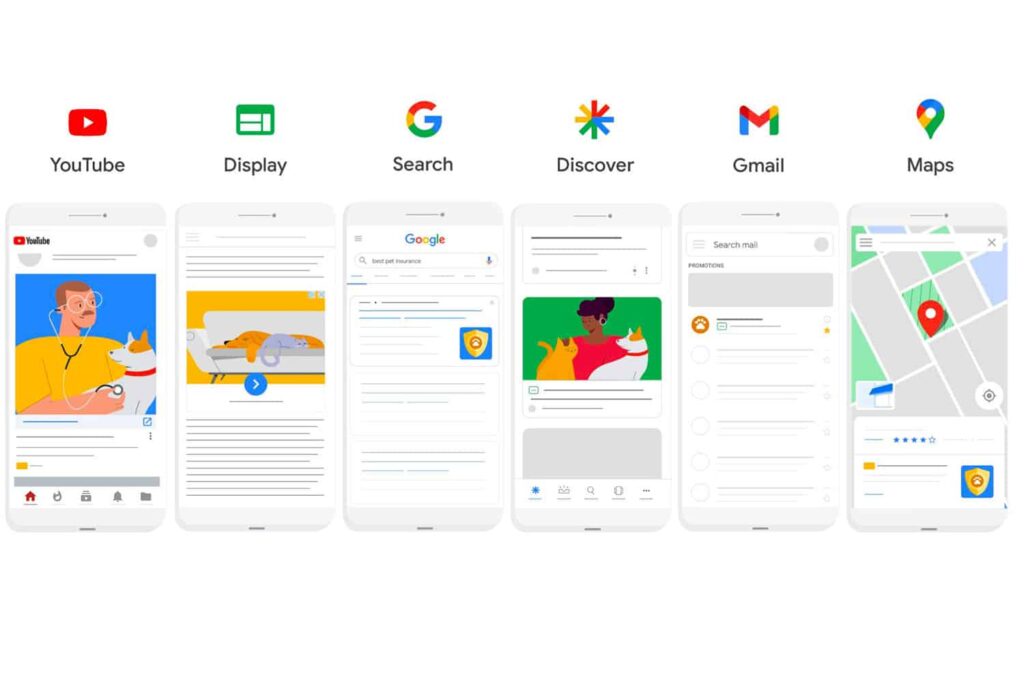How to get the most out of Google Ads

In the era of rapid digitalization, Google advertising has become an essential tool for businesses to reach potential customers quickly and effectively. However, not everyone knows how to leverage the power of this platform fully. In this article, RentAds will help you how to get the most out of google ads, reduce costs, and increase conversion rates.
How to get the most out of Google Ads

Google advertising is one of the most powerful tools to help businesses expand their customer base, grow revenue, and strengthen their position in the digital market. However, to fully leverage this potential, you need a clear strategy, use the right tools, and make the most of the features that Google Ads offers. Below are detailed instructions to help you optimize every cent of your Google Ads budget.
Take Advantage of Free Listings on Google Shopping
Google Shopping is commonly known as a pay-per-click (PPC) advertising platform, but few know that you can still leverage its free listing feature. After being fined €2.42 billion by the EU for violating antitrust laws, Google expanded access and visibility for competitors on the search engine results page (SERP), including unpaid listings. Here’s how to make the most of it:
- Optimize your current Google Shopping campaign using tools to identify which products generate high click-through and conversion rates.
- Then, adjust your product feed and improve your landing pages.
- Go to Google Merchant Center → Growth menu → switch Surfaces across Google to “ACTIVE”.
This feature not only increases visibility but also helps you reach potential customers without spending your advertising budget.
Appear on YouTube and Display but pay only when revenue Is generated
Previously, video and display ads mainly served the goal of brand awareness. But now, with smart algorithms and Google’s vast database of user behavior, you only pay when the ad drives actual conversions. The reason this works well is that Google knows what users like, what they are searching for, what they’ve purchased before, and even identifies purchasing behavior through receipts in Gmail. As a result, Google only shows your ad when the probability of conversion is high, benefiting both you and Google. How to take advantage:
- Use Smart Display Campaigns with a tCPA or tROAS bidding strategy.
- Prioritize audiences like Similar Converters and Custom Intent.
- Use the Audience Insights Tool to optimize your targeting strategy.
Note: This is a “black-box” system, meaning you don’t have full control over ad delivery — Google decides when and how to show your ads.
Attract New Customers with the “New Customer Acquisition” Setting
Not all conversions carry the same value. A new customer often brings significantly more long-term value than a repeat buyer, especially in e-commerce models. Google understands this and offers the New Customer Acquisition feature in Smart Shopping campaigns. Here’s how to take advantage of it:
- In Smart Shopping, enable the “New Customer Acquisition” option.
- Set a higher CPA for new customers (e.g., if your existing customer CPA is $42, you can set the new customer CPA at $80).
- Ensure Google Ads and Google Analytics are connected, and configure separate conversion tags to distinguish between new and returning customers.
This strategy helps you optimize spending per audience group and effectively expand your customer base.
Track Offline Conversions
Although e-commerce is on the rise, 70% of shopping behavior still happens in-store. According to Google, 75% of users who search for a nearby store on mobile visit it within 24 hours. This means if you’re not tracking offline conversions, you’re missing out on a large portion of your ad impact. Here’s how to take advantage of it:
Launch Local Campaigns using GPS, Wi-Fi, and store location data.
Set up the following conversion types:
- Store Visits: Google automatically collects device movement data.
- Offline Purchases: Integrate with your CRM via API or upload offline sales data manually.
- Online Purchases: Use conversion pixels as usual.
This is an essential strategy for retail businesses aiming to capture both online and in-store performance.
Boost Gallery Ads and Showcase Shopping
Images have a stronger persuasive power than text. According to research by Intent Lab, 85% of consumers say that visual information is more important than written content. Google understands this and has introduced new formats like Gallery Ads and Showcase Shopping Ads, allowing you to display attractive product images right in the search results, especially on mobile devices. How to take advantage:
- Create Gallery Ads that appear at the top of Google search results.
- Make use of extended reach across platforms like YouTube, Google Discover, and Gmail Ads — all integrated within Google’s ad system.
- Especially effective for industries such as fashion, cosmetics, travel, furniture, etc.
The key to success is early testing. When these features become widely adopted, you’ll already have a competitive edge in terms of performance and cost.
Tips for Optimizing Performance Max Campaigns on Google

To effectively optimize your Performance Max campaigns on Google, you can apply the following tips:
Run for at least 6 weeks to let Google AI analyze
To allow Google AI enough time to collect and analyze data for accurate performance optimization, you should run the campaign for at least six weeks. This duration is necessary for the algorithm to process quickly, compare the effectiveness of different ad variations, and select the best-performing components. If the campaign is too short, the collected data will be incomplete, leading to inaccurate optimization decisions and impacting overall performance.
Use relevant audience lists as signals for AI
Performance Max campaigns are based on Google’s AI technology, which requires accurate input signals to operate effectively. You should use high-quality audience lists such as remarketing lists, custom intent audiences, Customer Match, or Similar Audiences. These signals help Google’s algorithm identify users with high conversion potential, accelerate campaign optimization, increase success rates, and reduce ineffective ad spending.
Increase the number and variety of ad assets
An optimized campaign needs diversity in its ad components. You should include at least 20 text assets, consisting of 15 different headlines and 5 unique descriptions. For visuals, prepare at least 7 image assets—3 landscape, 3 square, and 1 portrait. Additionally, at least one video asset is required, which can be self-made or created using Google’s built-in video creation tool during campaign setup. A wide variety of assets allows Google AI to test more combinations and find the most effective ones, boosting overall campaign performance.
Segment by category, topic, or target audience
To improve management efficiency and optimization, separate ad asset groups based on product categories, content topics, or languages that match specific target audiences. This segmentation not only enhances campaign performance but also makes it easier to track and evaluate the effectiveness of each group, allowing for precise and timely adjustments. You can create multiple different ad groups within the same campaign to optimize reach and content variety.
Focus on unique and engaging content
The ad creative is the most important factor determining a campaign’s success. A high-quality ad will boost performance and capture user attention, while also giving you flexibility to promote products, services, or new offers effectively. For the best results, focus on creating unique, engaging content that resonates with your target audience. Avoid copying or using outdated templates that may cause viewer fatigue.
Develop ad creatives with a smart strategy
Regularly refreshing ad creatives is a strategy that helps maintain engagement and improve campaign performance. When you update your ad content to better match each target audience, Google’s AI can optimize more effectively and improve conversion rates. However, wait at least 3–4 weeks to let existing assets “ramp up” and gather sufficient data before making major changes. Updating too early or too frequently can cause performance instability.
Wait 3–4 weeks before deep optimization
Google’s AI system requires a certain period to collect data and “learn” from the ad components you provide. The ideal learning phase is around 3 to 4 weeks. During this time, allow the assets to “ramp up,” gather performance data, and showcase their actual effectiveness. After this period, you can consider deeper optimization by combining or replacing components based on real performance to achieve optimal results.
Monitor and refresh low-performing Ads regularly
Bạn nên thường xuYou should regularly check the performance rating of each ad asset, at least once per quarter. Assets showing signs of being “underperforming” or outdated should be refreshed or replaced to avoid dragging down the campaign’s overall results. While assets can be updated after the initial 3–4 week period, keep in mind that changing them too frequently may lead to unstable and unpredictable ad performance.
yên kiểm tra điểm xếp hạng hiệu suất của từng thành phần quảng cáo, ít nhất một lần mỗi quý. Các thành phần có dấu hiệu “kém hiệu quả” hoặc đã lỗi thời nên được làm mới hoặc thay thế để không ảnh hưởng đến kết quả chung của chiến dịch. Mặc dù bạn có thể thay thế các thành phần này sau 3-4 tuần, nhưng cần lưu ý rằng việc thay đổi quá thường xuyên có thể khiến hiệu suất quảng cáo trở nên bất ổn và khó dự đoán.
Use timely advertising strategies
To maximize the effectiveness of promotional campaigns, you should launch your ad campaign at least 2–3 weeks before the promotion starts. During this period, continuously refresh your ad creatives by shifting from general store-awareness ads to promotion-focused ads that highlight specific deals and offers. This strategy helps maintain stable performance over a longer duration while taking full advantage of seasonal or time-based promotions.
Image Ad inventory
Consumers often seek shopping inspiration through visual content. Therefore, you should take advantage of image-based ad placements to effectively reach and attract new customers. This is especially useful when building brand awareness or encouraging customers to explore new products through the appeal of high-quality visuals.
Use metrics to evaluate and improve campaign performance
Google Ads provides the “Ad Strength” metric to help assess the effectiveness and potential success of each campaign component. You can easily access this metric by clicking on “Ads” in the “Campaigns” dropdown menu on the left-hand side of the dashboard. The rating ranges from “Poor” to “Excellent” and serves as an essential tool to determine whether your ad components are properly optimized. Based on the results, you can make necessary adjustments to improve overall performance.
Google Ads is a vast advertising ecosystem—if leveraged effectively, it can help you optimize costs, boost sales, and maintain a long-term competitive edge. From free Shopping listings and high-performing video ads to strategies for reaching new audiences and integrating offline efforts, these are all opportunities you shouldn’t overlook. Start with features that suit your business and don’t hesitate to experiment. Every step you take toward optimization today lays the foundation for sustainable growth tomorrow.
Contact Info
You need a Facebook advertising account but don’t know any reputable provider. Coming to Rentads is where you will experience what you need google account for rent prestige, high trust, and professional consulting and service support for customers.
Frequently Asked Questions
Running a campaign for at least 6 weeks allows Google’s AI algorithm enough time to collect and analyze accurate data. This helps optimize ad performance and enables the system to make more effective ad delivery decisions.
The “Ad Strength” metric evaluates the effectiveness of ad asset groups. You should monitor this metric regularly to identify which ad groups are performing well or poorly. Based on the results, you can refresh or adjust your ad content to improve overall campaign performance.